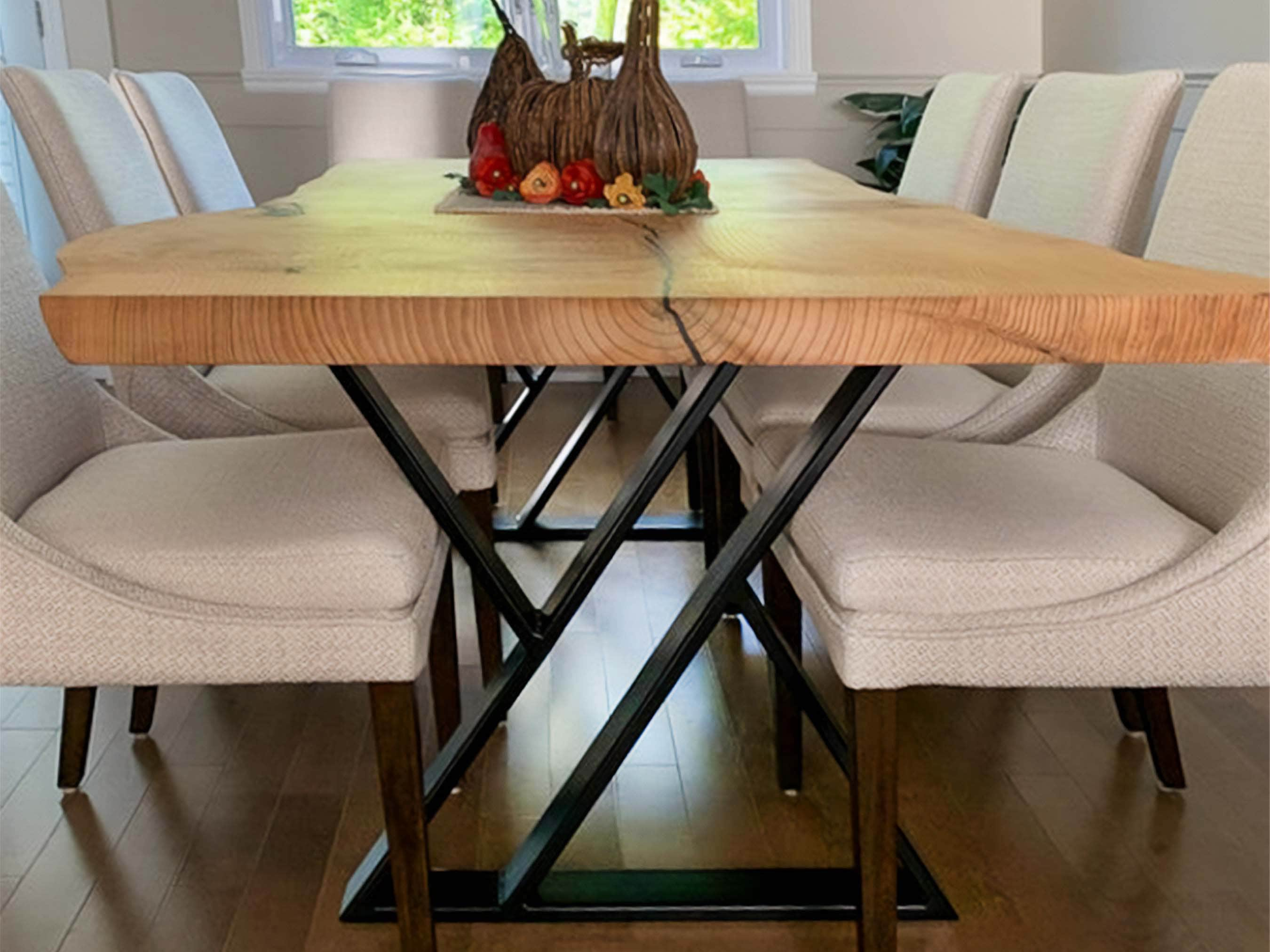From Traditional to Modern: Find the Ideal Dining-room Table Legs for Your Design
While classic designs such as cabriole and turned legs evoke a sense of timeless refinement, contemporary designs like barrette and geometric choices offer a possibility for striking visual passion. As you consider these components, the concern stays: exactly how can you effortlessly incorporate these varied leg styles to create a harmonious eating experience?
Comprehending Table Leg Styles
The range of eating area table leg designs can substantially influence both the appearances and functionality of the room. Each leg design adds special sensible functions and visual components, dealing with diverse style preferences and use requirements. Recognizing these designs is vital for selecting the right table that straightens with your general indoor design vision.
As an example, conical legs provide a tidy, classic appearance that can boost a room's sophistication, while stand bases give security and take full advantage of legroom, making them perfect for smaller areas. Barrette legs, a characteristic of mid-century contemporary style, introduce a commercial panache, permitting an airy, open feel. In a similar way, trestle legs stimulate rustic charm, offering durable support and a feeling of timelessness.
Wood legs can bring warmth and texture, whereas steel alternatives commonly communicate a streamlined, contemporary vibe. Ultimately, recognizing table leg designs is vital for creating a cohesive dining location that mirrors individual design while guaranteeing functionality and comfort.
Traditional Table Leg Options
When picking dining area table legs, standard alternatives often personify timeless elegance and workmanship. These layouts reflect an abundant heritage and a dedication to quality, making them perfect for those who value classic looks.
One of one of the most renowned typical leg designs is the cabriole leg, identified by its stylish curved form. This style usually includes decorative makings and is most commonly located in Queen Anne and Chippendale furniture. One more prominent alternative is the transformed leg, which flaunts a series of smooth, rounded forms that offer a traditional appearance while keeping security.
In addition, the straight leg, while simple, provides a durable and basic framework that can blend perfectly with a range of tabletop designs. For those drawn to ornate describing, claw-and-ball feet legs stimulate a sense of splendour and can act as a stunning focal factor in any kind of dining area.
Last but not least, pedestal bases, although not strictly legs, give an alternate traditional option that allows for adequate legroom and can be beautifully carved. Each of these typical leg designs adds to the general setting of an eating room, marrying feature with aesthetic charm.

Modern Table Leg Designs
Modern table leg styles supply a diverse series of styles that stress ingenious products and tidy lines. These designs typically focus on capability while offering as striking focal factors within a dining space. Minimalist aesthetics are common, with legs crafted from products such as metal, glass, and engineered wood, which add to a airy and contemporary feeling.
One prominent style is the hairpin leg, identified by its slender, conical structure that provides security without overwhelming the table top (dining room table legs). This design is often discovered in mid-century modern furniture and can effortlessly complement various table forms. One more fad is making use of geometric forms, where legs might handle unbalanced or angular types, including visual passion and a touch of creativity

Mixing Designs for One-of-a-kind Rooms
Commonly, house owners seek to develop special eating spaces that show their individual design by mixing different layout components. This approach enables the consolidation of varied aesthetic appeals, leading to an unified yet distinct environment. For instance, pairing a rustic wood table with smooth, modern-day steel legs can create an attractive contrast that boosts the area's general charm.
Furthermore, incorporating vintage table legs with modern tabletops can evoke a feeling of history while keeping a contemporary perceptiveness. Such combinations not only showcase individual taste yet additionally encourage imagination, enabling home owners to curate an area that feels both personal and welcoming.
Color plays a crucial role in this mixing process; selecting table legs that match or contrast with the existing color pattern can boost aesthetic interest. For instance, whitewashed legs can soften the boldness of a dark table surface, creating a well balanced visual.
Tips for Picking the Right Legs
Choosing the right table legs is crucial for accomplishing both functionality and visual appeal in your eating room. Begin by taking into consideration the general design of your space. Standard setups benefit from legs that feature elaborate makings or turned styles, while contemporary spaces might require smooth, minimal designs.
Following, examine the elevation and stability of address the legs. dining room table legs. Common eating tables vary in between 28 to 30 inches in elevation, so ensure the legs match this dimension for comfort. Furthermore, durable materials, such as wood or steel, can enhance security and durability
Examine the leg form also-- options include directly, tapered, or pedestal layouts. Straight legs use a timeless look, while conical legs can add a touch of elegance. Pedestal bases supply adequate legroom and are suitable for smaller spaces.
Final Thought
In recap, choosing the perfect eating space table legs calls for careful consideration of both contemporary and standard styles. By harmonizing leg design, elevation, and product with the general design, a cohesive and inviting atmosphere can be accomplished.
The range of dining room table leg designs can dramatically affect both the visual appeals and performance YOURURL.com of the room. Inevitably, understanding table leg designs is crucial for creating a natural eating area that shows personal style while making certain functionality and comfort.One of the most renowned conventional leg styles is the cabriole leg, identified by its elegant rounded shape. Straight legs supply a classic appearance, while conical legs can add a touch of style.In recap, selecting the perfect dining room table legs calls for cautious factor to consider of both traditional and modern designs.